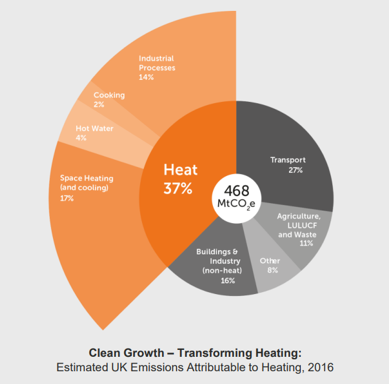Currently within the UK, heating, and cooling contribute to 37% of the UK’s energy emissions. Whilst hydrogen, solar PV, hydropower, and battery storage will drive the UK’s net zero strategy a wide focus is required surrounding existing infrastructure and the repurposing of waste outputs into engineering assets.

Most Refrigerants use a liquefiable vapour to transfer heat, this is widely known as ‘refrigerant’. Most common refrigerants belong to the hydrofluorocarbon (HFC) family and have high values in global warming potential (GWP). However, technical design and the utilisation CO2 can prove a crucial piece of the net-zero strategy when phasing out high GWP refrigerants. R744 holds parameters to utilise steam generation for clinical applications for the NHS, whilst offering wider risk mitigation through dense city centres and locality to ignition.
Recent times have shown a shift towards natural refrigerants, which utilise regenerative properties to be used inside a refrigerant compression cycle. The important characteristics of ‘natural refrigerants’ are hydrocarbons, ammonia, and carbon dioxide, although when safety concerns are raised (toxicity and flammability), R744, a carbon dioxide-based refrigerant gas becomes most advantageous. Although R744 is not flammable, it can only be utilised at high pressures in compression cycles. See below table one, characteristic properties of Carbon dioxide and some other refrigerants.
| Refrigerant types | Critical temperature (°C) | Critical Pressure (bar) | GWP | Flammable or explosive | Toxicity |
| CO2 (R744) | 31.03 | 73.84 | 0 | No | No |
| Ammonia (R717) | 132.2 | 113.5 | 0 | Yes | Yes |
| R-134a (Pure HFC) | 101.06 | 40.59 | 1200 | No | No |
| R407C (HFC Mix) | 86.8 | 46.0 | 1600 | No | No |
Recent innovations emphasise the need to capture CO2 and scrub it to a refrigerant grade to further utilise waste products of vast global warming potential. CO2 capture and utilisation are a process of isolating CO2 from existing industry energy-related sources and repurposing the ‘waste output’ into a tangible asset for commercial use. The capture and utilisation of R744 in both an industrial and commercial process will offer estates significant savings surrounding taxations and wider alignment to their own net-zero strategies.

